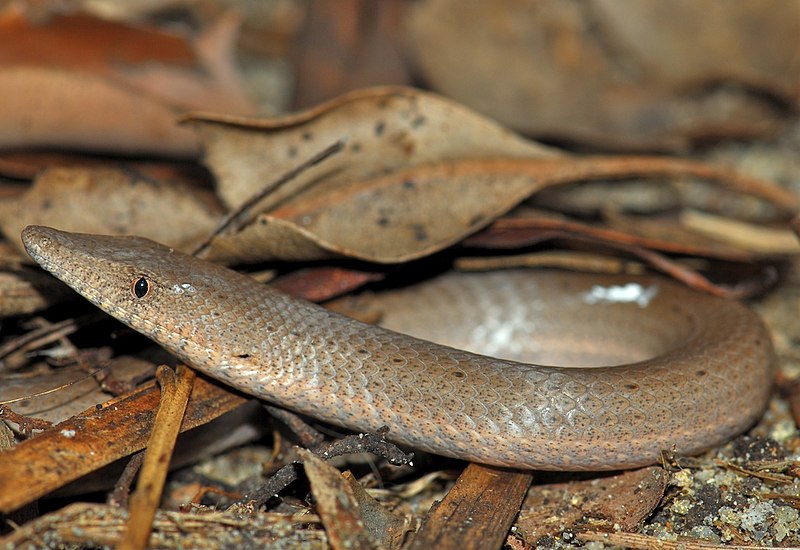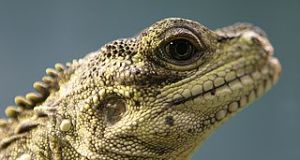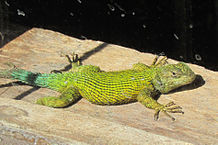 While working at the Bronx Zoo some years ago, I was delighted to receive a surprise shipment of New Guinea Snake Lizards (Lialis jicari). Also known as the Long Headed Scaly-foot or Flap-Footed Lizard, it and the related Burton’s Snake Lizard (Lialis bertoni) have long fascinated herpetologists and hobbyists alike. As you’ll see below, their similarity to snakes goes way beyond a limbless body; indeed, many consider the Snake Lizards to be an example of convergent evolution (unrelated species evolving similar characteristics). Today I’d like to summarize my experiences and some of what is known about these amazing, little-studied creatures.
While working at the Bronx Zoo some years ago, I was delighted to receive a surprise shipment of New Guinea Snake Lizards (Lialis jicari). Also known as the Long Headed Scaly-foot or Flap-Footed Lizard, it and the related Burton’s Snake Lizard (Lialis bertoni) have long fascinated herpetologists and hobbyists alike. As you’ll see below, their similarity to snakes goes way beyond a limbless body; indeed, many consider the Snake Lizards to be an example of convergent evolution (unrelated species evolving similar characteristics). Today I’d like to summarize my experiences and some of what is known about these amazing, little-studied creatures.
Classification
The 2 species mentioned above are the sole members of the genus Lialis. They are classified in the family Pygopodidae, along with approximately 38 other legless relatives. Their distribution is limited to Australia, New Guinea, and some nearby islands.
Snake Lizards have been described by one taxonomist as “legless geckos”, and appear most closely related to that group. Actually, Snake Lizards do sport remnants of their rear legs, which appear as small skin flaps (hence the name “Flap-Footed Lizard”).
Diet
New Guinea and Burton’s Snake Lizards feed entirely upon other lizards, with skinks and geckos being particularly important food items in most habitats. There are a few (unconfirmed, I believe) reports of small snakes being taken. Other family members feed largely upon invertebrates. One, the Hooded Scaly-foot (Pygopus nigriceps), appears to be a scorpion specialist. This unique creature also mimics several venomous snakes in appearance and defensive behavior.
Description and Range
Endemic to New Guinea, the habitat of the New Guinea Snake Lizard is not well-described in the literature.
New Guinea Snake Lizards may be gray, yellowish-tan or pink-tinged in color, and bear irregular, dark lines. The snout is longer and more “pointed” than that ofBurton’s Snake Lizard. There are 6 to 8 pre-anal pores, as opposed to the 4 exhibited by its relative.
Burton’s Snake Lizard has been described as Australia’s widest ranging reptile, and may be found in habitats as diverse as rainforests and semi-deserts. It also occurs on New Guinea. The background color ranges through various shades of cream, yellow and brown; stripes and spots may be present or absent.
Note: The photos accompanying this article are of Burton’s Snake Lizard; please click here for a photo of the New Guinea Snake Lizard.
A “Snake-Like” Hunting Strategy
While the slender, legless body is an obvious snake-like characteristic, this is merely the tip of iceberg. Like snakes, Snake Lizards have evolved the ability to overcome large, vigorous prey while minimizing the danger to themselves, without the aid of legs. The long snout keeps the victim away from the eyes and head once it is bitten, and the eyes themselves can be retracted, to keep them away from flailing teeth and claws.
The Snake Lizard’s hunting strategy is also finely tuned. When I first began keeping New Guinea Snake Lizards, little had been written about this aspect of their behavior, and I was truly astonished at what I saw. The Snake Lizards would remain motionless when prey (usually a Brown Anole) approached. The strike was impossibly fast, and invariably the anole was snagged at the neck and throat. The long scissor-like jaws of the Snake Lizard retained their grip until the anole expired…often I could see that the Snake Lizard was exerting extra pressure, perhaps in response to the anole’s movements.
Snake Lizards take quite large animals. Studies ofBurton’s Snake Lizard have revealed that small lizards are grasped anywhere on the body, and swallowed while alive, while large ones are kept in the “suffocation hold” until they cease moving. Over a period of several years, however, I never observed New Guinea Snake Lizards to grasp anoles or geckos anywhere other than in the neck-throat region, no matter what their size.
Other Similarities to Snakes
 In addition to similar hunting strategies and the loss of legs, Snake Lizards resemble snakes in possessing pointed, re-curved teeth and highly mobile jaw joints. Caudal luring (wiggling the tail to attract prey) is a common hunting strategy among snakes (i.e. young Copperheads, Red-Tailed Ratsnakes) but only rarely reported in lizards. However,Burton’s Snake Lizard does hunt in this manner (I’ve not observed this in the New Guinea Snake Lizard).
In addition to similar hunting strategies and the loss of legs, Snake Lizards resemble snakes in possessing pointed, re-curved teeth and highly mobile jaw joints. Caudal luring (wiggling the tail to attract prey) is a common hunting strategy among snakes (i.e. young Copperheads, Red-Tailed Ratsnakes) but only rarely reported in lizards. However,Burton’s Snake Lizard does hunt in this manner (I’ve not observed this in the New Guinea Snake Lizard).
As in snakes, the eyes of the Snake Lizards are protected by a hardened brille (fused, clear eyelids). In addition, several family members lack external ear openings.
Captive Care
Neither of the Snake Lizards is commonly seen in public or private collections, so I was quite excited by the prospect of working with them.
Field research has indicated that the preferred temperature ofBurton’s Snake Lizard is 95 F. The New Guinea Snake Lizards under my care thrived at an ambient temperature of 82-85 F, with a basking site of 96 F and exposure to UVB.
The diet was comprised of Brown Anoles (Anolis sagrei) and House Geckos (Hemidactylus spp.) that had been collected inFlorida (where both are introduced). Anoles were preferred. Although parasite and disease transmission can be a concern when using wild-caught food animals, no related health issues arose. I would, however, recommend that keepers test and medicate feeder lizards, and set up a breeding colony, just to be safe.
There have been occasional reports from zookeepers that Snake Lizards will take invertebrates that have been “scented” (rubbed with) a gecko or skink. I had no success the few times I tried this, out of curiosity, and would be concerned about nutritional deficiencies in the long term.
Further Reading
Lialis Natural History (Australian Museum Publication, 1924)
Burton’s Snake Lizard Natural History
Burton’s Legless Lizard image referenced from wikipedia and originally posted by Smacdonald
Burton’s Legless Lizard image referenced from wikipedia and originally posted by Dad1
 That Reptile Blog – Reptile, Amphibian and Exotic Pet Care and Information
That Reptile Blog – Reptile, Amphibian and Exotic Pet Care and Information



